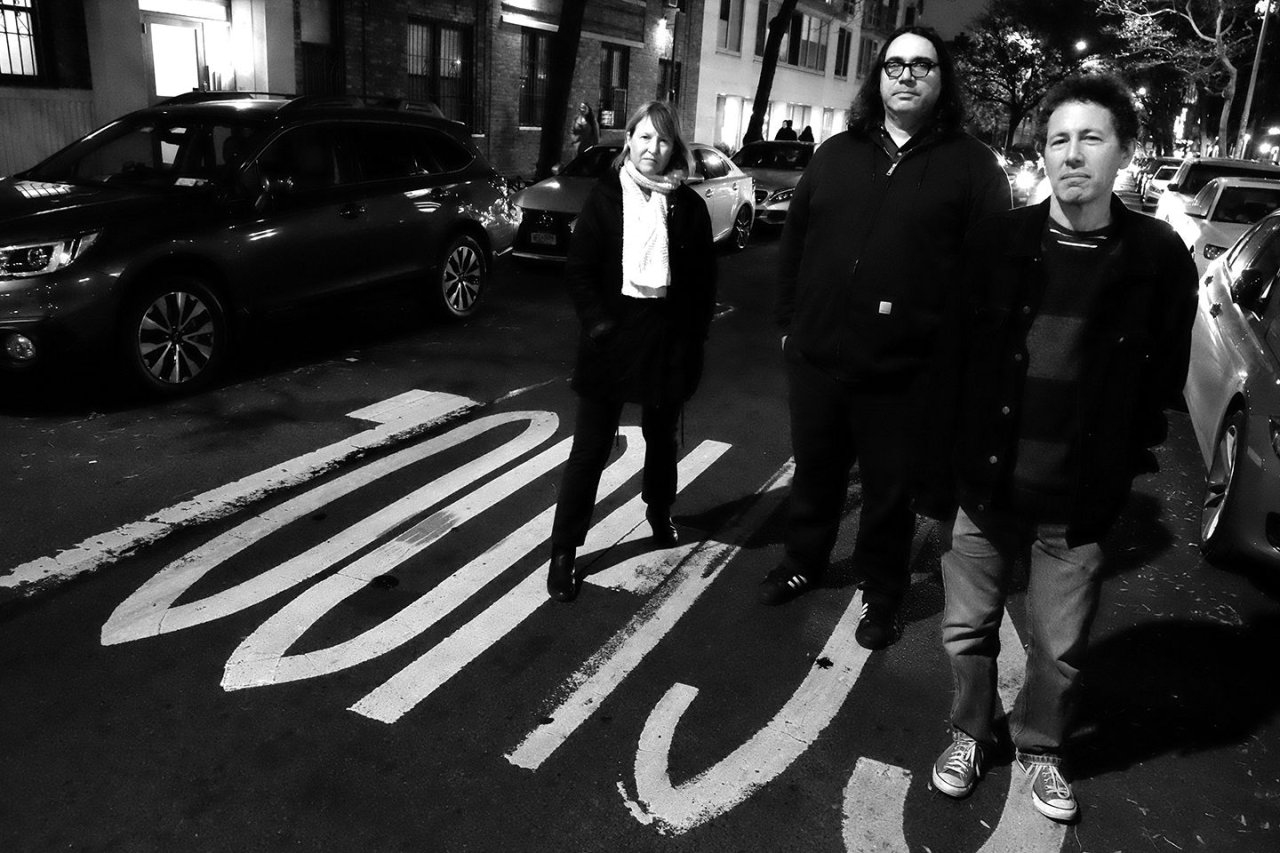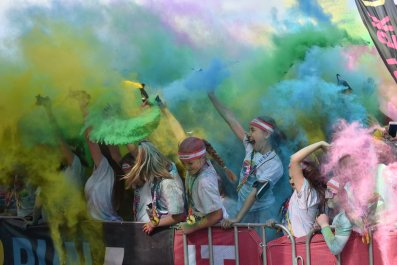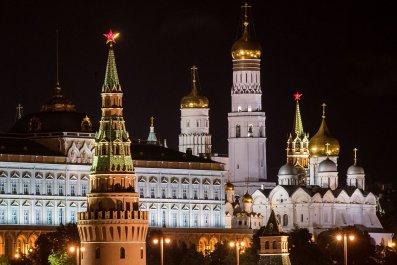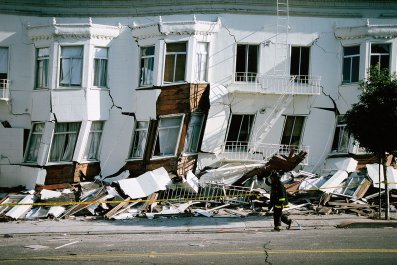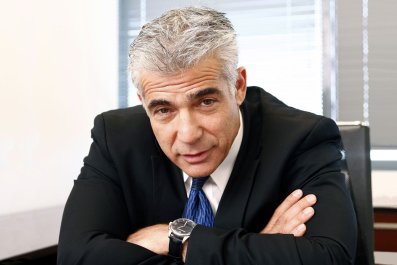A few months ago, Ira Kaplan and Georgia Hubley, the husband-wife duo who have performed together in the band Yo La Tengo for 34 years, had some friends over to their apartment. They told their friends a secret: Yo La Tengo had completed a new album—the band's 15th—and planned to call it There's a Riot Going On, a timely nod to Sly and the Family Stone. (This was "before Matador told us to stop telling people what the record's called," Kaplan says, laughing.)
Turned out their guests had never heard the Sly album. Kaplan, who considers it one of his favorite albums, mimics his reaction: "You don't know that record!?" He immediately retrieved it from his record collection and played it for them.
For decades, Yo La Tengo has played a similarly curatorial role for its fan base. The beloved Hoboken, New Jersey, band has a reputation for whipping out impromptu covers in concert and hosting surprise-guest performers at their sometimes-annual Hanukkah shows. (Yo La Tengo's favorite tradition is performing all eight nights of Hanukkah at the same venue.) Kaplan was a rock critic before he became a rocker, and the band's long discography is littered with erudite cultural references and obscure covers, such as a killer deconstruction of George McCrae's "You Can Have It All." Why not nab a Sly Stone title in 2018?
A quick rock-grammar lesson: What's Going On refers to Marvin Gaye's landmark 1971 album. What's Goin' On is the title of a Frank Strozier album from 1977. There's a Riot Goin' On—famously titled in response to Gaye's album—is the name of the 1971 masterpiece by Sly and the Family Stone, recorded at a time of vicious national upheaval. And There's a Riot Going On is the name of the new Yo La Tengo album. (The Sly title is so iconic that Google's spell-check nudges me to change "Going" in the previous sentence to "Goin.")
The album title "did feel right," says Kaplan, 61, during a recent conversation at the Manhattan offices of Matador Records. Kaplan is dressed in his trademark uniform—jeans and a thin-striped T-shirt—and seated opposite the band's bassist, James McNew. (Hubley is absent, preferring to let her bandmates do interviews.) Yo La Tengo chose the title in early 2017, around the time millions of Americans really were taking to the streets to protest a certain real estate mogul's presidency.
But Riot sounds nothing like Sly Stone. And despite its resistance-adjacent title, the material is not outwardly political. (Kaplan doesn't care to write overt protest songs: "I just don't think we're that good at it," he concedes. "We sing so quietly...") Centered around murmuring loops and drifting ambient passages, it is the band's warmest and most serene collection of music since 2000's And Then Nothing Turned Itself Inside-Out. If anything, there seems to be a deliberate contradiction between the title and the calming spirit of the album.

"It was a wholly hermetic experience," McNew says of making the album. There was no conventional recording or demoing. The trio worked entirely alone at their studio in Hoboken, and instead of writing songs the way they typically do, they pieced through years of unused melodies, discarded film scores and odds and ends to create something new. (Eschewing an outside engineer or producer, McNew constructed the album himself in ProTools.) The result is a dreamy sprawl of style and texture, touching on ambient, dream-pop, doo-wop and drone music with surprising ease throughout its 63 minutes. Riot feels wide-ranging but not random or scattershot, reflecting the band's unusually free-form recording process.
"I don't think we were thinking about why we were recording," Kaplan says. "We just were. Over the years, we've tried as much as possible not even to tell ourselves we're working on a new record."
* * *
Here's a bombshell revelation: The members of Yo La Tengo no longer live in New Jersey. Though the band is practically a mascot of Hoboken, Kaplan and Hubley quietly moved to Manhattan in 2014, not long after the original Maxwell's, the longtime venue of Yo La Tengo's Hanukkah residency, closed down. (The band resurrected the Hanukkah tradition across the river, at Bowery Ballroom, in 2017.) McNew, meanwhile, lives in Brooklyn.
For a certain population of indie nerds, Yo La Tengo is as synonymous with the Garden State as Bruce Springsteen. But "even when we were living in Hoboken, it wasn't so much Hoboken that we cared about," Kaplan says. "It was Maxwell's and WFMU. We love the Guitar Bar. There are things we love in Hoboken."
Thankfully, Yo La Tengo still rehearses and maintains a P.O. box in Hoboken. The new album was recorded at their studio there. "We've got a great place to work," Kaplan says, "and it's filled with things that would be a real headache to move somewhere else."
Hoboken is where the band formed: Kaplan and Hubley met in the early 1980s after frequently spotting each other at the same record stores and concerts. In those days, Kaplan wrote about music for publications like the long-defunct New York Rocker and the Village Voice.
The couple placed a classified ad in the Voice when they decided to start a band: "Guitarist & bassist wanted for band that may or may not sound like the Soft Boys, Mission of Burma, and Love." After releasing a string of scrappy, almost-great albums on Coyote Records and undergoing numerous personnel shifts, Yo La Tengo solidified its lineup when McNew joined on bass in time for the 1992 album May I Sing With Me. With 1993's Painful, an indelible balancing act of dreamy ballads and feedback-fuzz noisiness, the band achieved greatness. And then… pretty much stayed that way.
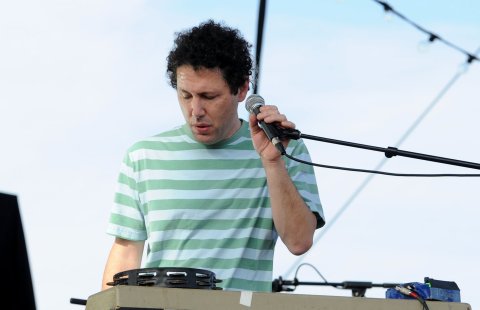
Has ever there been an indie-rock band more sturdy, persistent and reliably great than Yo La Tengo? Yo La Tengo never had a mainstream hit, never sold out, never compromised its integrity in any discernible way. At this point, the band is one of the few continuous flag-bearers of the 1980s American indie underground left standing. Sonic Youth, led by another husband/wife duo, dissolved along with Kim Gordon and Thurston Moore's marriage. Pixies and Dinosaur Jr. took lengthy breaks. R.E.M. gracefully bowed out. So did The Replacements, though less gracefully.
Yo La Tengo has been active in some form or another since 1984. During that time, empires have fallen, popes have come and gone, the music industry has teetered on the brink of collapse and Yo La Tengo has endured, pumping out quality records every two to four years like it's nothing. All the albums are enjoyable, and several of them (particularly Painful and 1997's I Can Hear the Heart Beating as One, which is more of a stylistic tour de force) are regarded as ironclad classics.
Related: The 23 Best Albums of 1997
"They have this rare ability to know when and exactly how to change things up to keep themselves interested," says producer and engineer John McEntire, who mixed the new album and produced 2013's Fade. "Being able to be like, 'Oh, now we're gonna be Condo Fucks for two months.' [Or] when they had to spin the wheel and do whatever came up."
McEntire is referring to the band's eccentric Wheel of Fortune tour, in which fans would determine the evening's set list by spinning a giant wheel. The wheel might, for instance, dictate that the band could only play songs that start with the letter S. One night, the wheel category of choice was "Sitcom Theatre," and Yo La Tengo proceeded to reenact an entire Seinfeld episode onstage.
More recently, the band brought its humor and weirdly effortless eclecticism to a new run of Hanukkah shows, featuring surprise guests like Jeff Tweedy, Fred Armisen and Bob Odenkirk. It was the band's first round of Hanukkah shows since 2012. During the intervening years, Kaplan didn't even know when Hanukkah was happening. ("I was not aware of there being a Hanukkah during those years," McNew adds.)
Of course, when I mention the band's remarkable longevity, Kaplan shrugs it off. "We just like playing," he says. "So it's really not that hard." When I point out that Yo La Tengo seems like the chief surviving indie-rock band from that '80s generation, the guitarist refuses the honor, citing other veteran acts. "The Mekons—they don't do that much, but they're still a thing," he says. "Certainly the Flaming Lips. And then we have our friends Antietam, who are completely remarkable. They started before we did."
But the Flaming Lips generally play the same set list every night, while Yo La Tengo finds transcendence in spontaneity. The band's versatility in concert is impressive: In just the past three years, I've watched the band bring up Kaplan's 80-something mother to sing at Central Park's Summerstage, damage eardrums while jamming on the 11-minute "Pass the Hatchet, I Think I'm Goodkind," sing through yellow balloons with experimental composer Alvin Lucier and share the stage with Nick Lowe at a recent Hanukkah show.

In late February, the band premiered songs from Riot at an intimate performance in Brooklyn. The trio traded instruments at will to capture the looseness of the new material, with McNew oscillating between keyboards and upright bass. Hubley sang lead vocals on songs like "Ashes," and harmonized with Kaplan on the hushed doo-wop bliss of "Forever." It is a rare thing when a band in its fourth decade of existence can perform nothing but new songs without attracting crowd ire, but Yo La Tengo is that band.
A recurring theme in our interview is the band's disinterest in making plans. Consider the Wheel of Fortune: Let fate decide. McNew says the new album was recorded "accidentally," with no plan in mind, and Kaplan says the band didn't start worrying about the 2017 Hanukkah shows until a few weeks prior. "We've really learned to concentrate our worrying," says McNew. Making albums is similarly anti-plan. Says Kaplan, "It's mainly like, 'Let's get together and play with as little concern as possible for the end result.'"
About the only long-term plan they will accede to is the future of the band. Will Yo La Tengo be around for another 30 years? "Definitely," Kaplan answers with a smirk. What about doing all eight nights of Hanukkah again next winter? They have absolutely no clue.



